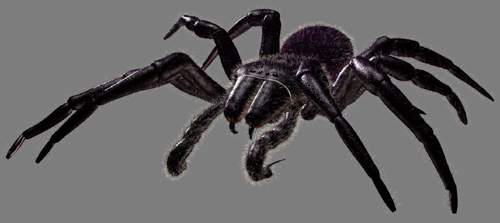The CATRig is the hierarchy that defines the CAT skeletal animation system. It is a fast, sophisticated yet flexible character rig that is designed to let you create the characters you want without having to write scripts.

Image courtesy of NHNZ
The flexibility of the CATRig character rig is the result of keeping the structure as generic as possible. With CAT's modular composition design, a spine can also be a neck. Instead of pelvises and ribcages from which limbs and other parts extend, CAT has hubs. You can add and remove different rig elements to get the exact skeleton you need for your character.
Each rig element combines geometry with special capabilities specific to its function. For example, each limb has its own, sophisticated IK system; spines have a powerful procedural spine algorithm; and hubs have a retargeting system.
Each rig also has its own layered animation system, procedural walk-cycle system, and clip/pose system. In addition, CAT includes utilities for mixing poses, resizing rigs and animation, transferring animation automatically from one rig to another, and more.
A CATRig can take any form you require. It can have as many spines, heads, pelvises, limbs, fingers, toes and tails as you need; it can even have extra bones.
You can customize the geometry of all bones in CAT and then bake these edits into the bone mesh. These edits are also saved to your rig preset, thus enabling you to define complex rigs with customized geometry and load these presets into new scenes.
To remove an element, simply select it and press Delete. Deleting an element also removes all bones that are part of its local weights group. For example, if you delete any bone in a limb, this also deletes all the bones in the limb, the IK target, and any extra bones that have been added to the rig, regardless of whether they have ben relinked to other parts of the hierarchy.
CAT does not mandate any particular naming convention; instead, each rig preset contains a different naming scheme. You can easily modify the naming scheme to suit your requirements.
The Copy/Paste/Paste Mirrored buttons are available on the Setup rollout for all body parts. You can copy any body part on a CATRig and then paste it to another of the same type on the same or a different rig. For example, you can paste a copied bone to another bone, but not to a hub.
Manipulation gizmos provide a cleaner interface for working with your character. Often the CATBones are hidden under the skin mesh, so selecting and editing the bones can be difficult. The gizmo, which can be any of five different spline shapes (or a custom object), surrounds the bone so it’s easier to grab for applying transforms interactively.
Every bone in the CATRig has an array of controls that defines how it can be manipulated and how it inherits motion. These controls are available on the Hierarchy panel.
The quickest and easiest way to edit your rig is in the viewport, in Setup mode. Edit the proportions of the rig simply by dragging the elements around.
Sometimes you need to edit bone pivot positions. This is achieved by positioning your CATBone relative to its pivot point.
Every CATRig has one CATParent. The CATParent, which is the triangle+arrow symbol seen under each rig as it is created, can be considered the character node of the rig.
A hub is a special type of CATBone that serves as an organizing device in the CATRig. Typically it’s a centerpoint from which spines, arms, legs, tails, and extra bones sprout. A hub can be a pelvis, ribcage, thorax, or head, depending on its function.
Spines are used in CAT to connect two hubs together. Spines provide special features that speed up your workflow, enable sharing of animation data among a diverse range of rigs, and allow sophisticated IK tools.
You can use a limb as an arm, leg, wing, and so on. Arms and legs are mostly similar in that they use the same IK system and have identical user interfaces.
Every limb in CAT has an IK target built in. By default, in the case of legs, the IK target is displayed as a rectangular outline called the FootPlatform; on arms it is a cross-shaped Point helper. The latter is not present by default; it must be added with the Create IK Target command.
The collarbone is a special type of bone that can be added to limbs. It appears between the limb and the hub to which it’s attached. The limb does not inherit rotations of the collarbone.
Limbs can have palms, which are used as palms on arms, ankles on legs, and so on.
A tail in CAT is basically a long bone chain with a few special features built in to make it useful as a tail.
Exta bones are bones you can add to any bone in CAT for any reason. You can use extra bones for armor, breathing and facial animation, weapons, walking sticks, and so on.